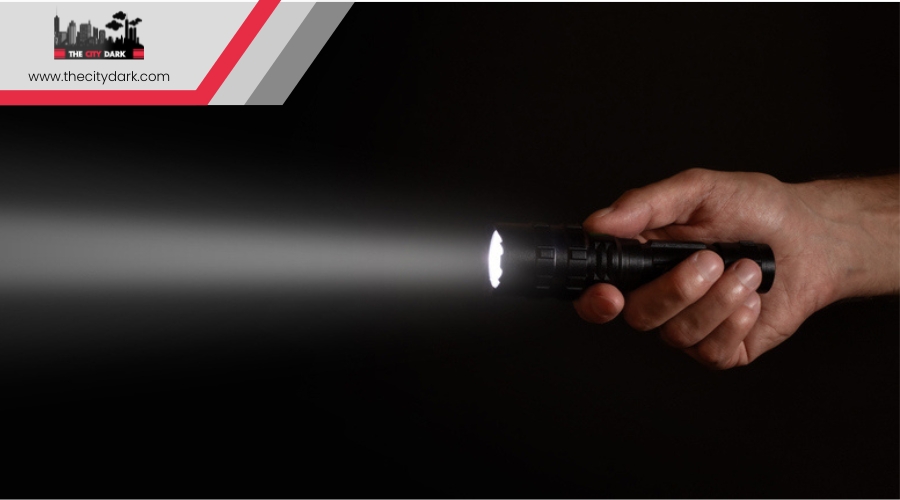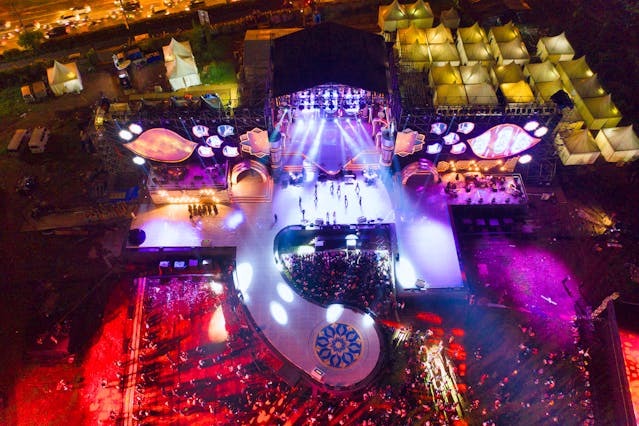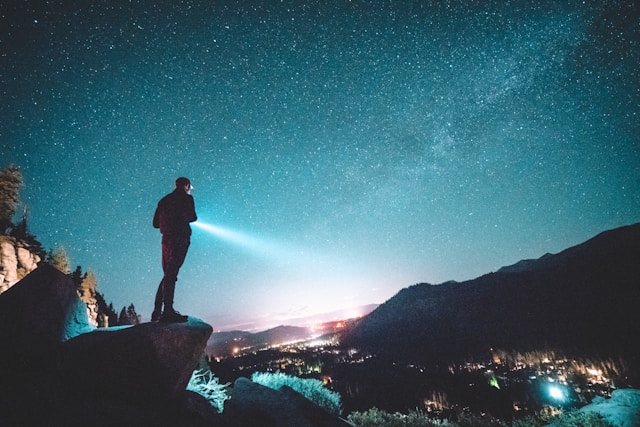Did you know that in an urban environment, the average person is exposed to three times more artificial light than those in rural areas? This statistic highlights the challenge you face when trying to use flashlights for signaling in cities. Amidst the overwhelming glow of streetlights, neon signs, and vehicle headlights, your attempts at communication must cut through the visual noise.
Techniques like Morse code adapted for urban settings, specific flashlight signaling protocols, and understanding the legalities of light signals can make all the difference. As you navigate the complexities of urban light pollution, it’s crucial to learn which methods stand out not just for their visibility, but for their ability to convey clear messages in emergencies or other critical situations.
Stick around to uncover the nuances of effective flashlight communication in the concrete jungle, where being seen can mean the difference between safety and peril.
Key Takeaways
- City light pollution can make it challenging to use flashing lights for signaling in urban environments.
- Learning Morse code and using a flashlight can be an effective method to communicate distress signals in cities.
- Combining a flashlight with a bright-colored flag or cloth can enhance the visibility of signals.
- Adhering to safety regulations, including understanding local laws and practicing proper signaling techniques, is crucial when using flashlights for signaling in urban areas.
Understanding City Light Pollution
Have you ever wondered why the stars seem dimmer in the city? It’s all due to city light pollution, the excessive artificial light that drowns out the night sky’s natural beauty. This isn’t just about losing the stars. The collective glow from streetlights, billboards, and buildings can obscure celestial objects, making it harder for you to use flashing lights to signal for help in an emergency.
Imagine you’re trying to catch someone’s attention with a flashlight; in a city saturated with light, your signal could easily be lost among the myriad of other lights.
City light pollution doesn’t just make signaling for help harder; it disrupts ecosystems and affects our health by messing with our circadian rhythms. But there’s hope. By advocating for shielded fixtures, supporting lighting ordinances, and promoting energy-efficient lighting, you can help mitigate these effects.
Morse Code for Urban Environments
In urban environments, learning Morse code offers a reliable method to communicate distress signals using a flashlight, even amidst the overwhelming city lights. Knowing this simple yet effective language can be a game-changer when disaster strikes, providing you with a way to send clear messages without relying on conventional communication tools that might be unavailable.
Consider incorporating Morse code into your emergency kit in several ways:
Using a flashlight
- *Flash on and off* to signal S.O.S. or other messages.
- Keep it handy for nighttime signaling.
Tapping on hard surfaces
- Create Morse code sounds against walls or pipes, useful when visuals are obstructed.
Reflecting sunlight with a mirror
- Signal for help during the day when a flashlight mightn’t be visible.
- Catch the attention of rescuers from a distance.
Using a whistle or horn
- Blow in short and long bursts to mimic Morse code sounds.
- Ideal for cutting through urban noise.
These methods ensure that you’re prepared to communicate effectively, making Morse code a critical addition to your urban survival strategy. Remember, in moments of crisis, being able to signal for help could make all the difference.
Flashlight Signaling Protocols
When signaling for help, using a flashlight according to established protocols can significantly improve your chances of being noticed. One effective method is to send Morse code signals. This timeless technique allows you to communicate specific messages, including SOS (· · · — — — · · ·), which is universally recognized as a call for help. Morse code consists of a series of dots (short flashes) and dashes (long flashes), with each letter of the alphabet and number represented by a unique combination.
In addition to Morse code, combining your flashlight with a bright-colored flag or cloth can make your signals even more visible. Wave the flag during the day and shine your flashlight on it at night to catch the attention of passersby or rescue teams.
Furthermore, employing a flashlight or headlamp at night is crucial. The light can be seen from a distance, especially in urban environments where visibility might be reduced by buildings and other structures. If you have one, a laser pointer can also be used to create a focused beam of light, enhancing the visibility of your signals.
Safety and Legal Considerations
Before diving into various signaling methods, it’s crucial to understand the safety and legal considerations that come with them. When you’re thinking about using flashlights for signaling in cities, you’ve got to be mindful of a few key points to ensure you’re not only effective but also on the right side of the law and safe. Here’s what you need to keep in mind:
Local Laws and Regulations
- Be aware of the specific legalities around visual and electronic signals in your area.
- Understand restrictions on certain signaling devices like flares or fireworks, especially in urban settings.
- Knowing the consequences of sending false distress signals is a good idea.
Safety Regulations
- Ensure your signaling methods don’t endanger you or others.
- Familiarize yourself with guidelines for signaling in densely populated areas and near important infrastructure.
Minimize Interference
- Consider how your signaling might affect public safety and emergency response.
- It’s a good idea to use methods that minimize disruption to emergency services.
Being informed about these safety and legal considerations isn’t just a good idea; it’s essential for responsible signaling.
Practice Makes Perfect
Mastering the art of signaling with flashlights and other methods requires consistent practice to ensure you’re ready for any emergency. The mantra ‘practice makes perfect’ truly applies here. To be proficient, you must rehearse various signal methods, including visual, auditory, and Morse code, to name a few. Regular practice with your flashlight and other tools like whistles and mirrors will make sure you’re familiar with their operation and features.
Organizing practice drills with family members or emergency partners is crucial. These drills simulate real-life scenarios, enhancing your coordination and readiness to use different signaling techniques effectively. Make sure to include adapting your signaling methods to various environmental conditions and times of the day. This adaptability ensures you’re prepared for any situation, whether it’s in broad daylight or the dead of night.
Conclusion
In summary, navigating city light pollution requires clever signaling techniques with your flashlight. Master Morse code to communicate effectively in urban jungles. Adhere to established flashlight signaling protocols to avoid misunderstandings. Always keep safety and legal considerations in mind to prevent unintended consequences.
Lastly, don’t forget that practice makes perfect. The more you practice these techniques, the more proficient you’ll become at sending clear, concise signals in any city setting.
Stay safe and stay visible.



